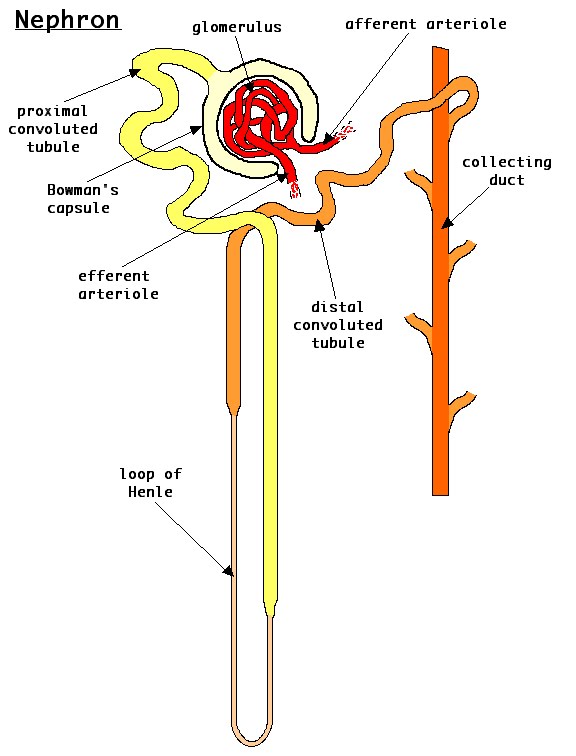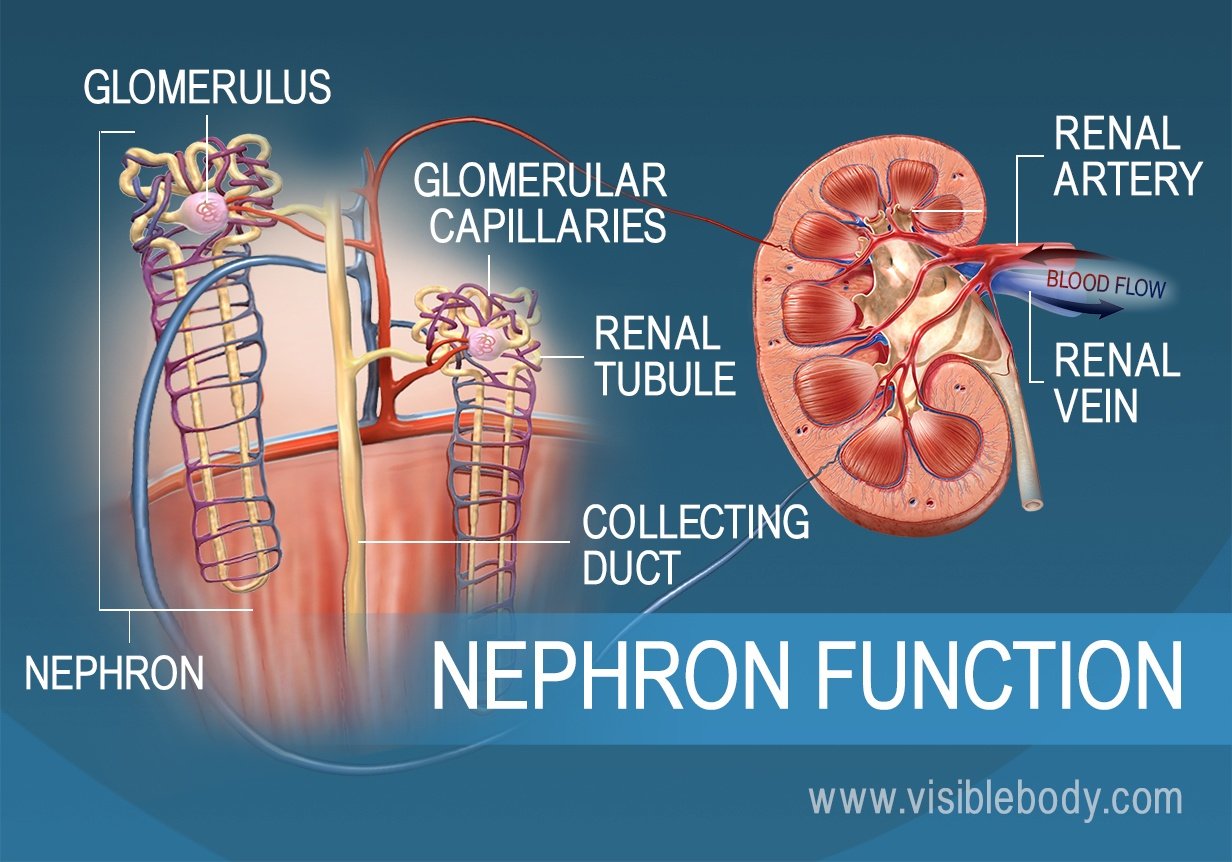Nephron Diagram With Functions Nephron Kidney Structure Urin Biology Diagrams The nephron is divided into two portions, namely, the glomerulus and the renal tubule and helps in the removal of excess waste from the body. Also Read: Regulation Of Kidney Function. Learn more about Nephron, its structure, function, renal tubule, renal corpuscles and other related topics at BYJU'S Biology

The nephron is the microscopic, functional unit of the kidney, responsible for filtering blood and forming urine. Each kidney contains approximately 1 to 1.5 million nephrons. Nephrons are primarily located in the cortex and medulla of the kidney. The renal corpuscle, which includes the glomerulus and Bowman's capsule, is located in the cortex, while the

Nephron: Definition, Parts, Structure, & Functions, with Diagram Biology Diagrams
Nephron, functional unit of the kidney, the structure that actually produces urine in the process of removing waste and excess substances from the blood. There are about 1,000,000 nephrons in each human kidney. Learn more about the structure and function of nephrons in this article.

Understanding how nephrons function is key to comprehending kidney health and disease. This exploration will delve into the processes carried out by different components of the nephron to achieve efficient filtration. Structure of the Nephron. The nephron is a sophisticated unit within the kidney, designed to perform the complex task of filtration. A nephron is the basic unit of structure in the kidney that filters blood and produces urine. Learn how nephrons work, their structure, and how they differ among vertebrates.

Wikipedia Biology Diagrams
Learn how your kidneys filter blood, why kidneys are important, and how kidneys help maintain a healthy balance of water, salts, and minerals in your body. Each nephron includes a filter, called the glomerulus, and a tubule. The nephrons work through a two-step process: the glomerulus filters your blood, and the tubule returns needed
